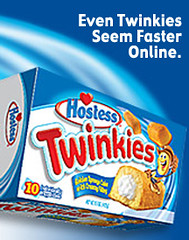If there is one secret to be learned after conducting hundreds and thousands of interviews, ranging from an emotionally exhausted mother staying at a
Ronald McDonald House to billionaire
Sheldon Adelson, it is that the success of any interview hinges on effective communication.
And, if there is any prerequisite to ensure effective communication, it is to see the interviewee as a person, regardless of any perceived labels — status, position, gender, whatever. The concept is simple. The execution is not.
For the past few months, one label that seems to have galvanized, if not polarized, online communities and bloggers is the most basic of all — gender. To this ongoing discussion in its numerous forms, I say gumballs.
Right, gumballs. You know what I mean. When we were all kids and could not care less about silly things like gender, most of us claimed certain gumballs were better than others — blue, red, yellow. We were all delusional. The gumballs all tasted the same.The gender issue is much like that. It doesn't matter where it turns up. Last month it appeared on a post penned by the popular blogger Penelope Trunk when she abandoned career conversations in favor of sharing her perspective on her marriage, which quickly turned into a war of words about gender.
“So I’m going to tell you the truth about stay-at-home dads…” she
wrote.
Not surprisingly, most of the discussion quickly descended into non-communication, with some claiming that any man commenter who disagreed was somehow invalid, if not sexist, because, well, they were men. Never mind that not all of them were
men.
Ho hum. What most missed was that if there is a "truth" about stay-at-home dads … it is that there is no truth about stay-at-home dads. Just as there is no truth about stay-at-home moms. Just as there is no truth that accurately defines a good marriage, spouse, or parent. Just as there is no truth to any discussion that revolves around a label.
We saw the same descent into non-communication after
Valeria Maltoni published her Top 20 PR PowerWomen list, which prompted Lewis Green to write his much discussed
post, which questioned the validity of an all-woman list (he has since yielded and agreed to support it).
Before I continue, I might point out that I already commented at the The Buzz Bin and agreed with Geoff Livingston’s decision to support the Top 20 PR PowerWomen. However, I also understand what Green was asking, but think that he asked the wrong question.
In sum, it seems to me that Green asked whether any list segregated by gender, race, or ethnicity was valid. In other words, he may as well have asked if we group our gumballs by size or color, does that place the other gumballs at a disadvantage. Um no, they still taste the same.
But let's say he asked a slightly different question. Does the promotion of a label — status, position, gender, whatever — further erode the ability of people to interact as individuals without regard to labels (such as gender) or does it simply draw more attention to their differences as identified by such a label and breed resentment?
Well now, that depends solely on the gumballs who make up the group. In this case, there is no evidence that the Top 20 PR PowerWomen are promoting that pink gumballs somehow taste better than blue gumballs simply because they are pink, which basically means that the list is no more exclusionary than a Top 20 PR PowerPeople in the Washington D.C. Area list or a Top 20 Bloggers Who Own Red Socks list.
However, Green's question also illustrates why labels are tricky things. On one hand, humans have great cognitive capabilities, which includes processing large amounts of information by categorizing it by labels. On the other hand, if we are not aware of this process, we can become enslaved by it — either by subconsciously taking on stereotyped behaviors that are identified with a specific label or assuming other people will likely act like the labels that they are assigned.
The simplest truth is there are no typical women and there are no typical men. And if you approach either with the preconceived notion that they will react or respond to you as their label suggests they might, you will likely be disappointed. Worse, you could greatly increase the likelihood of label-centric non-communication.
In a different context, freeing us from the trappings of gender: there are no typical mothers to be found at Ronald McDonald House. And there are no typical billionaires. They are all people and each of them deserve to be treated with respect as individuals. Treat them any differently and you may as well argue that one gumball is better than another gumball, when we all know that they taste the same.





















